A drought-driven “mortality event” is the largest ever recorded in the region
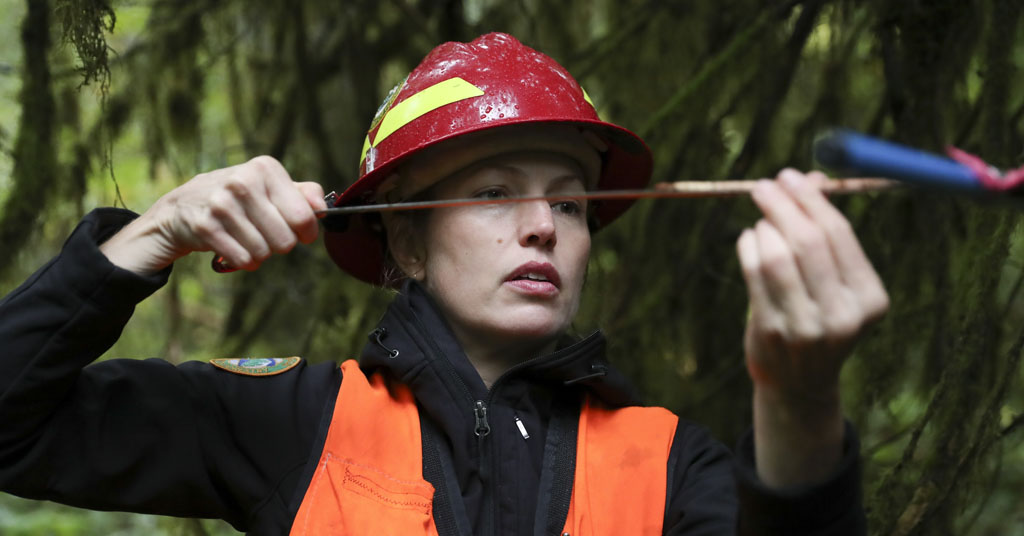
Christine Buhl, a forest health specialist for the Oregon Department of Forestry, uses an increment borer to core a western red cedar at Magness Memorial Tree Farm in Sherwood, Ore. Redcedars and other tree species in the Pacific Northwest have been dying because of climate-induced drought. Photo: AP Photo/Amanda Loman
“Trees of the Pacific Northwest” is a climate journalism collaboration between Columbia Insight, The Associated Press and Global Climate Desk. Today, the first of three stories co-published by the collaborating newsrooms examines issues affecting trees of the Pacific Northwest due to changing climate. Subsequent stories, to be published in December, will report on assisted migration of trees and the impact of record-high heat on forests. The collaboration, developed over a six-month period, is part of The AP Global Climate Desk’s coverage of climate and will be distributed throughout the AP’s global network. Columbia Insight is proud to be part of this series and thanks our readers and donors for continuing to support local environmental journalism. —Editor
By Nathan Gilles. November 16, 2023. Deep inside a forest in Oregon’s Willamette River Valley stands a dead “Tree of Life.”
Its foliage, normally soft and green, is tough and brown or missing altogether. Nonetheless, the tree’s reddish bark, swooping branches and thick, conical base identify it as the Pacific Northwest’s iconic western redcedar.
Christine Buhl, a forest health specialist for the Oregon Department of Forestry, plunges a tool called an increment borer into the dead tree’s trunk. Twisting the handle of the corkscrew-like borer, she extracts a long, thin sample of the tree’s inner growth rings.
The rings become thinner over time, indicating the tree’s growth slowed before the tree finally died. It’s a sign that this redcedar, like thousands of others in Oregon and Washington, died from drought.
“That’s why it’s the canary,” says Buhl. “Any tree that is less drought tolerant is going to be the canary in the coal mine. They’re going to start bailing (out).”

Christine Buhl holds a tree core from a dead western redcedar, showing healthier rings toward the right of the sample and more drought-affected rings to the left. Photo: AP Photo/Amanda Loman
For thousands of years, people have used redcedar to make everything from canoes to clothing. Its many uses have earned the species endearing names, including the “Tree of Life.”
More recently, scientists have started calling this water-loving relative of coast redwoods and giant sequoias by a less flattering name: “the climate canary.”
Last year, Buhl and colleagues reported that redcedars were dying throughout the tree’s growing range not because of a fungus or insect attack but due to the region’s “climate change-induced drought.”
Redcedars aren’t alone.
In recent years, at least 15 native Pacific Northwest tree species have experienced growth declines and die-offs, 10 of which have been linked to drought and warming temperatures, according to recent studies and reports.
Many researchers, Buhl included, are now arguing that these drought-driven growth declines and die-offs are the beginning of a much larger and long-predicted shift in tree growing ranges associated with climate change.
Firmageddon expanding
Trees, and plants generally, have growing ranges that are largely determined by climate factors, namely moisture and temperature.
Climate sets the limits on how far north and south, west and east, and up and down in elevation, a plant can grow. If the right moisture and temperature conditions aren’t met, a plant simply can’t live in that location.
For decades, scientists have argued that as atmospheric warming continues, growing ranges in the Northern Hemisphere will shift upslope in elevation and farther north, leaving many plants stranded in a warmer, drier world. The result is expected to be especially devastating for long-lived trees.
As climate mismatch sets in, trees are expected to die off and not grow back. This will lead to ranges shifting north and, in some areas, shrinking, according to predictions.
Buhl and her colleagues’ report hints at the possibility that redcedar mortality and growth declines are due to just such a range shift.
“We could be seeing the range of western redcedar shift or shrink due to changing conditions that reduce the suitability of some sites for this species,” said the report.
Daniel DePinte, U.S. Forest Service aerial survey program manager, suspects range changes are driving “Firmageddon,” a term coined by researchers, including DePinte. As reported by Columbia Insight in 2022, “Firmageddon” refers to the more than 1.2-million-acre (1,875-square-mile) die-off of five different fir species in Oregon, Washington and northern California.
Firmageddon is the largest single fir die-off ever documented, according to the Forest Service.
“The forests are moving uphill,” said DePinte.
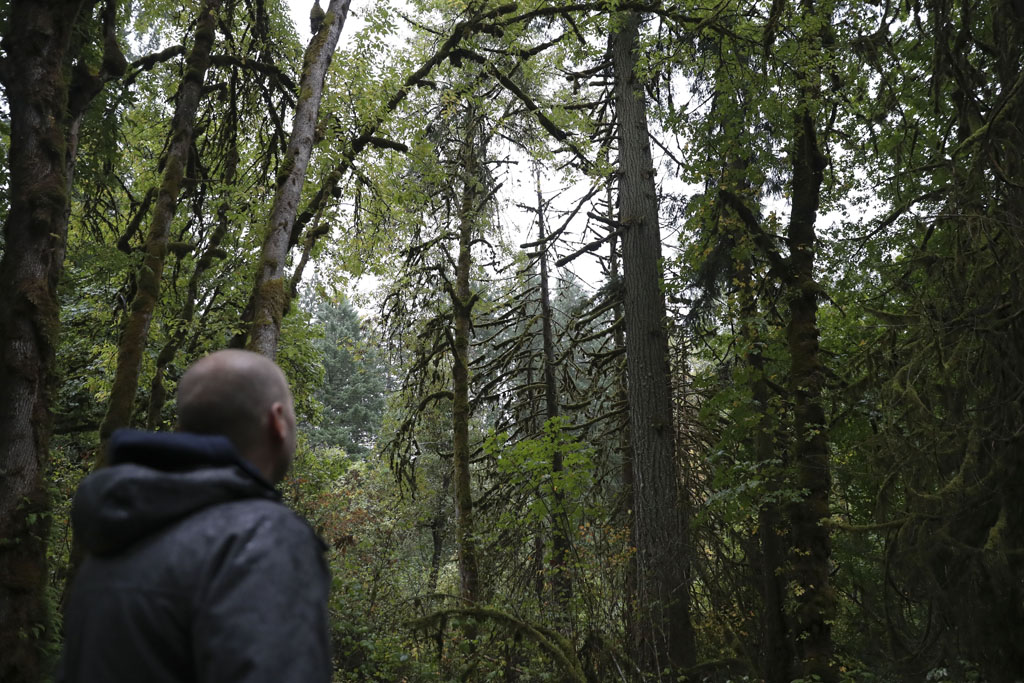
Property manager James Bailey looks at a dead Douglas fir among several dead western redcedars at Magness Memorial Tree Farm in Sherwood. Photo: AP Photo/Amanda Loman
DePinte and colleagues first identified and named the massive drought-driven fir “mortality event” last year while surveying area forests from the air.
Oregon was the hardest hit of the three states surveyed. DePinte and colleagues recorded 1.1 million acres (over 1,700 square miles) of impacted forests in Oregon.
DePinte, who is currently completing this year’s aerial survey, says Firmageddon appears to have grown in size since last year, though he says he and his colleagues still need to analyze their data.
Die-offs at the edges
According to tree-range predictions, climate-induced die-offs are expected to start at the edges of growing ranges, including at lower elevation locations predicted to become too warm and dry for many species.
DePinte’s survey revealed that the largest die-offs associated with Firmageddon are occurring at lower elevation sites.
Buhl and colleagues found a similar pattern with western redcedar. Mortality was greatest at sites less than 656 feet (200 meters) in elevation west of the Cascade Range, according to their analysis.
Scientists have observed a similar pattern for Douglas fir, the region’s leading commercial timber species.
Last year Douglas fir experienced a die-off encompassing 463,900 acres (720 square miles) of forests in Oregon and Washington.

Douglas fir trees that died as a result of insect damage following heat stress in Oregon’s Willamette National Forest. Photo: AP Photo/Amanda Loman
The vast majority of this die-off is occurring in the Klamath Mountains near the southern Oregon cities of Ashland and Medford. The die-off is the largest recorded for Douglas fir since 1989-1990, according to the Forest Service.
Douglas fir is not considered a “true fir” and is not officially part of Firmageddon, according to DePinte.
The die-off in the Klamath Mountains is limited to lower elevations, but is likely to move uphill as temperatures warm in coming decades, according to a study in the Journal of Forestry.
“Our analysis concluded that if climate change continues as predicted, we could see increased Douglas fir mortality at higher elevations,” said study coauthor David Shaw, a professor and forest health specialist at Oregon State University.
Shaw called the die-off “consistent with predictions for climate change.”
Drought stress and pests
But whereas redcedar is believed to be dying from drought alone, the Firmageddon and Douglas fir die-offs have been linked to a combination of drought weakening trees and insect pests moving in for the kill.
“These insects are not normally tree killers,” said DePinte. “This is evidence that the forests are reacting to climate change and droughts.”
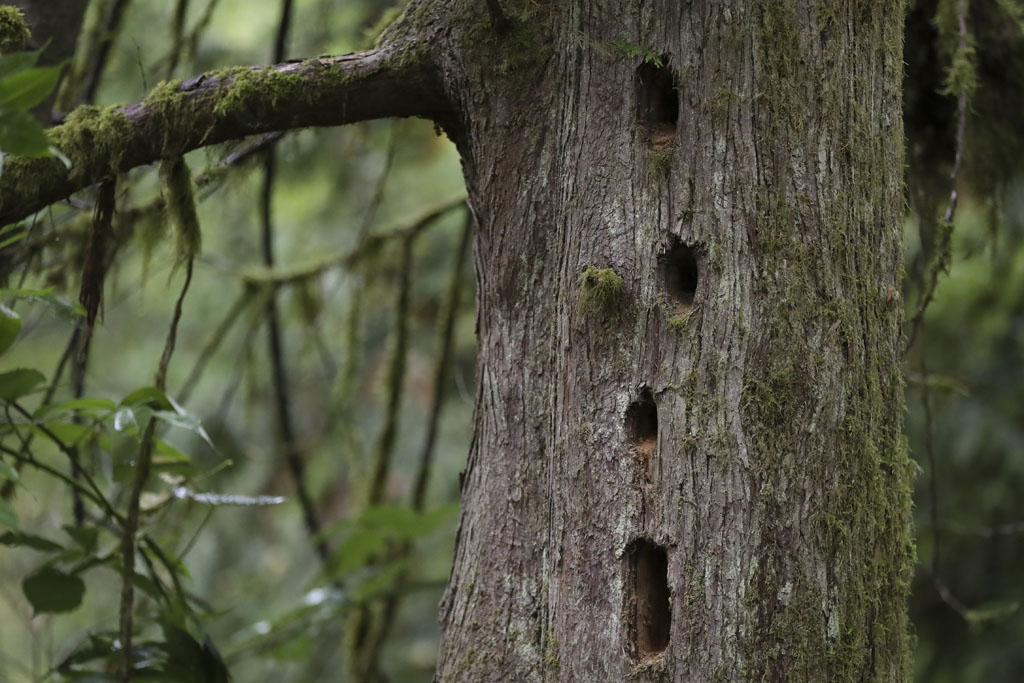
Woodpecker nesting holes in a dead western redcedar. Photo: AP Photo/Amanda Loman
The combination of drought-induced stress and pests, said Patrick Tobin, associate professor of disturbance ecology at the University of Washington, is analogous to a person with a weakened immune system dying from the flu.
“Drought-stress opens a window for biotic agents that might otherwise not be able to overcome a healthy, well-defended tree,” said Tobin.
Tobin is a coauthor of a 2021 study in the journal Forest Ecology and Management on the widespread decline of big leaf maples in western Washington. The study was unable to determine whether drought alone or drought in combination with disease-causing fungi and urban pollution was primarily responsible for killing the native maples.
Tobin said there’s strong evidence that “climate change range shifts are already occurring,” though he said it’s hard to tell if that’s what’s happening with big leaf maple, because the species has been understudied.

Big leaf maple tree in the Willamette National Forest. In recent years, at least 15 native tree species in the Pacific Northwest have experienced growth declines and die-offs, with 10 linked to drought and warming temperatures. Photo: AP Photo/Amanda Loman
However, Tobin said it’s unlikely big leaf maple will thrive in areas where it’s currently dying off, especially in low-lying metropolitan areas including Seattle, which, due to the urban heat island effect, tend to be hotter and drier than surrounding rural spaces.
“Under the current climatic regimes, (big leaf maple) might be one of those tree species that will need help to make it in an urban environment,” said Tobin.
Washington’s urban dwellers might need to start watering their big leaf maples over the summer the way they water tomatoes and other garden plants, according to Tobin.
Impact of fires
Predictions for the Pacific Northwest further suggest that wildfire will hasten the shifting and shrinking of growing ranges.
By the end of this century, the combined effects of climate change and fire are predicted to lead to a decline in the region’s conifer-dominant forests, which are expected to be replaced by mixed conifer and deciduous stands.
Trees now common in California are predicted to migrate northward into Oregon and Washington.
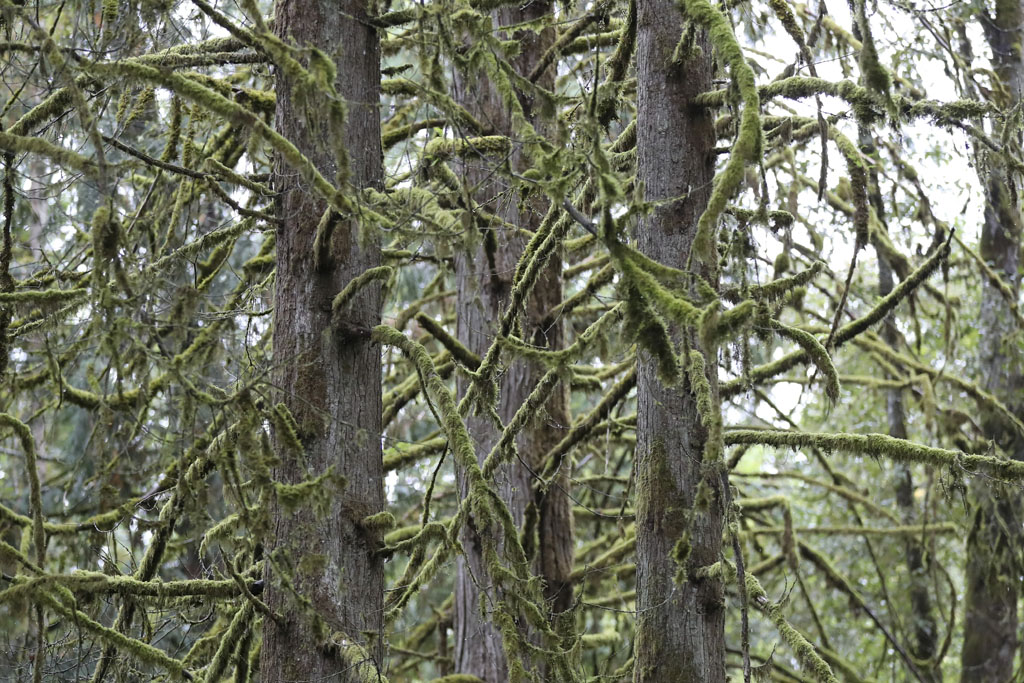
Moss grows on the branches of a dead western redcedar. Photo: AP Photo/Amanda Loman
DePinte said the Douglas fir die-off in the Klamath Mountains might be the start of a larger ecological change that could see Douglas fir replaced in many areas by more drought-tolerant pines and oaks.
“It’s going to turn into more of a woodland over the long term,” said DePinte.
David Lytle, U.S. Forest Service deputy chief for research and development, said this kind of ecosystem change, called “type conversion,” has already been observed elsewhere in the country, including the Southwest.
Lytle said range shifts induced by climate change are likely occurring.
“There is good research out there that has correlated range shifts with climate change. We have good scientific evidence for that,” said Lytle.
However, Lytle is reluctant to attribute any single tree’s die-off to climate-induced range shifts because die-offs can be due to multiple factors, including insect attacks.
“Tying a specific tree mortality event to climate change becomes more complicated, though it is certainly a contributing factor. It’s certainly having an effect,” said Lytle.
Canaries and tipping points
As for the climate canary, Buhl believes redcedar is unlikely to disappear from the landscape entirely, but probably won’t grow back in areas where it’s dying off.
“Unless we turn back climate change, there is no reason to hope western redcedar is going to make a comeback. We have to adjust our expectations of what species will grow well,” said Buhl.
Exactly how fast the Pacific Northwest’s forests might change is something Henry Adams, assistant professor at the School of the Environment at Washington State University, says he thinks a lot about.

Dead needles hang on a western redcedar. Photo: AP Photo/Amanda Loman
Adams is coauthor of a recent study on redcedar decline and die-off published in the Journal of Biogeography. The study’s title is “Canary in the forest?”
Adams study, like Buhl’s, determined that western redcedar is dying from drought.
However, Adams’ study did not determine if climate change was the ultimate cause of the die-off. This, said Adams, would have required a more extensive climate attribution analysis, which was beyond the scope of the study.
“I don’t want say it is climate change that caused this, but I will say this is what climate change is supposed to look like in the Northwest,” Adams told Columbia Insight in an interview earlier this year.
Adams, who spent his early career studying climate-related tree die-offs in the Southwest, said he thinks the Pacific Northwest’s forests could be at a similar “climate tipping point.”
The situation, said Adams, makes him think of kids at the dinner table slowly tipping back in their chairs bit by bit until they go just a little too far and the laws of physics abruptly intervene.
“Then, Bam! Totally surprised,” said Adams. “I don’t think the current research demonstrates that we have reached a tipping point. But that’s the really challenging thing about tipping points. It’s really hard to recognize them until you’ve gone past them.”


 Columbia Insight’s reporting on biodiversity in the Columbia River Gorge is supported by the Autzen Foundation and Pacific Power Foundation.
Columbia Insight’s reporting on biodiversity in the Columbia River Gorge is supported by the Autzen Foundation and Pacific Power Foundation. 
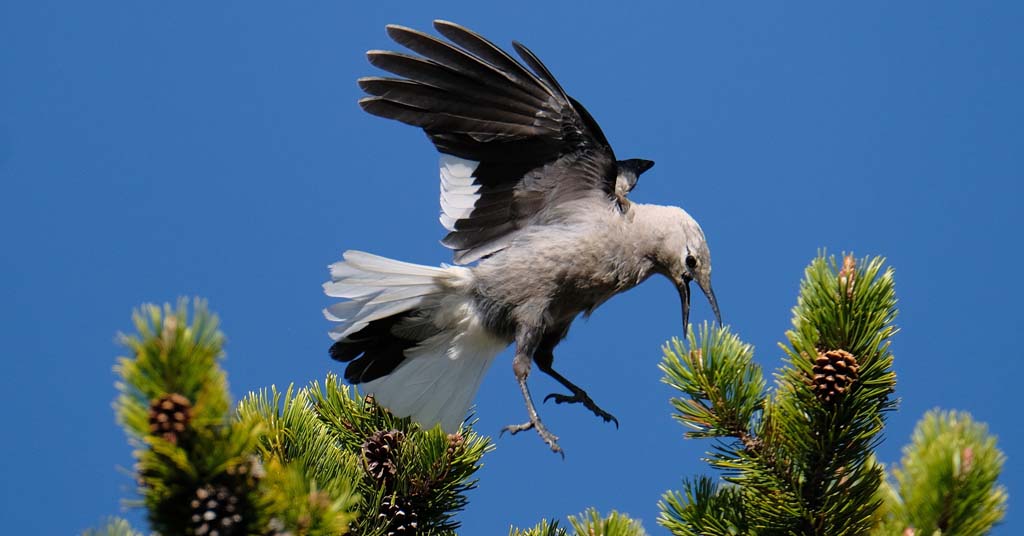
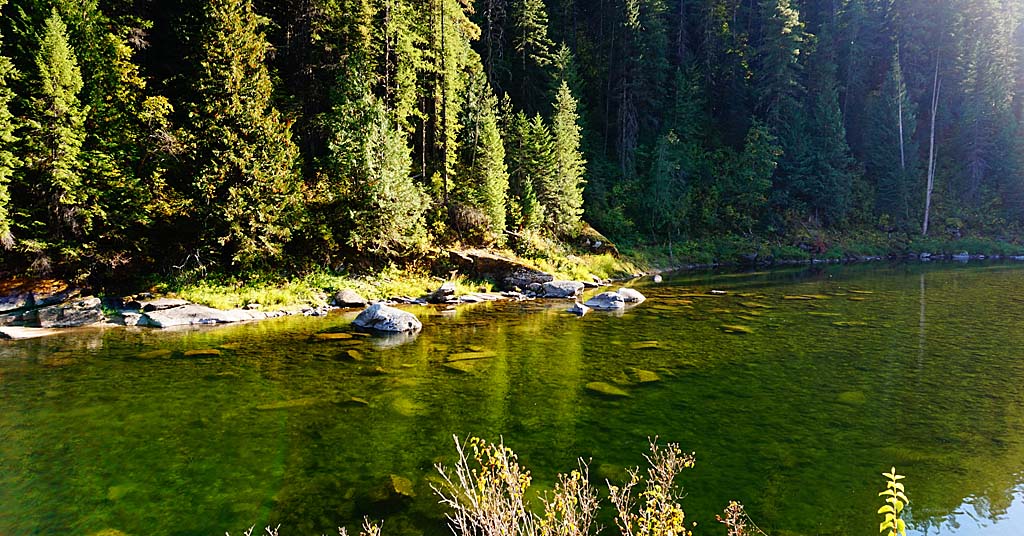
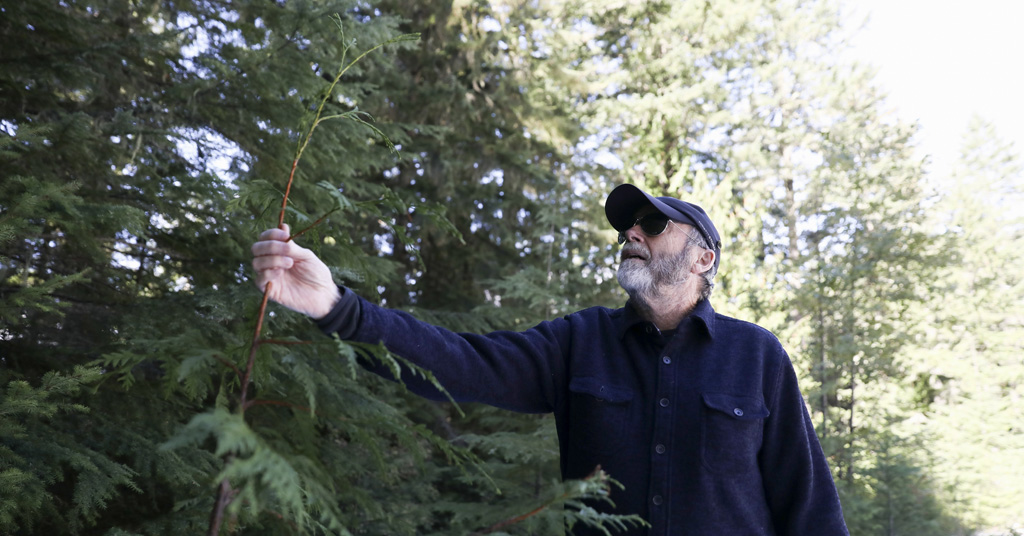



Hmmm . .
https://www.ncei.noaa.gov/access/monitoring/climate-at-a-glance/city/time-series/USW00024232/pcp/12/10/1895-2023?trend=true&trend_base=100&begtrendyear=1895&endtrendyear=2023
How’d the Red Cedars do during hundreds of years of historic persistent drought?
https://www.google.com/imgres?imgurl=https%3A%2F%2Fwww.mercurynews.com%2Fwp-content%2Fuploads%2F2016%2F08%2F20140127_031535_ssjm0126megadry90.jpg%3Fw%3D620&tbnid=4N2rwHKZiiCypM&vet=12ahUKEwi8mISwk9iCAxXmLkQIHdvHD5QQMygqegUIARCjAQ..i&imgrefurl=https%3A%2F%2Fwww.mercurynews.com%2F2014%2F01%2F25%2Fcalifornia-drought-past-dry-periods-have-lasted-more-than-200-years-scientists-say%2F&docid=dKgZdIYMu8hRGM&w=620&h=201&q=historic%20droughts%20in%20western%20us&hl=en&ved=2ahUKEwi8mISwk9iCAxXmLkQIHdvHD5QQMygqegUIARCjAQ